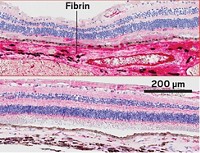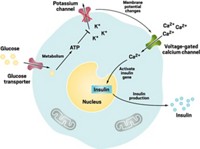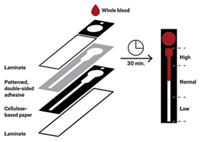Advertisement
Grab your lab coat. Let's get started
Welcome!
Welcome!
Create an account below to get 6 C&EN articles per month, receive newsletters and more - all free.
It seems this is your first time logging in online. Please enter the following information to continue.
As an ACS member you automatically get access to this site. All we need is few more details to create your reading experience.
Not you? Sign in with a different account.
Not you? Sign in with a different account.
ERROR 1
ERROR 1
ERROR 2
ERROR 2
ERROR 2
ERROR 2
ERROR 2
Password and Confirm password must match.
If you have an ACS member number, please enter it here so we can link this account to your membership. (optional)
ERROR 2
ACS values your privacy. By submitting your information, you are gaining access to C&EN and subscribing to our weekly newsletter. We use the information you provide to make your reading experience better, and we will never sell your data to third party members.
Biological Chemistry
Multitasking Cells
Experiments in microfluidic devices suggest surprising roles for red blood cells
by Celia Henry Arnaud
April 3, 2006
| A version of this story appeared in
Volume 84, Issue 14
COVER STORY
Multitasking Cells
From Pittcon
Experiments in microfluidic devices are uncovering surprising roles of red blood cells, according to research described last month at Pittcon in Orlando, Fla.
Dana Spence, a chemist at Wayne State University in Detroit, uses microfluidic devices to mimic small blood vessels. He and his students create artificial blood vessels by coating channels with endothelial cells, which are the cells that line blood vessels. Then they flow red blood cells and platelets through the channels. The dimensions of the channels are approximately the same as those of some of the narrowest vessels in the human circulatory system.
Tissues are made of multiple cell types that interact with one another, Spence emphasized at Pittcon. In the circulatory system, these interactions are further complicated by the interactions between flowing and stationary cells. Thus there are "certain questions you can't answer without microfluidics," he said.

Red blood cells are best known as oxygen carriers, but Spence thinks they may play other roles. These flexible cells deform as blood flows faster or passes through progressively smaller vessels. Such deformation triggers the release of adenosine triphosphate (ATP), which in turn stimulates the production of endothelial-cell-derived nitric oxide, NO. NO helps regulate platelets, which are responsible for blood clotting during wound healing. When red blood cells stiffen, they disrupt the NO pathway. The disruption may lead to cardiovascular or blood flow problems in diabetes as well as complications in a number of other diseases, Spence suggested.
Spence described experiments to determine the effect of oxidant stress on the stiffness of red blood cells. Red blood cells can generate nicotinamide adenine dinucleotide phosphate (NADPH), a key component for maintaining appropriate antioxidant levels, through the pentose phosphate pathway. A key enzyme in that pathway is glucose-6-phosphate dehydrogenase (G6PD). In the presence of the nonspecific oxidant diamide, red blood cells stiffen, and the level of ATP they release initially drops and then eventually recovers as the cells fight off the oxidant stress. If the oxidant specifically inhibits G6PD, however, the cells stiffen and ATP release never recovers.
Spence has compared the levels of ATP derived from red blood cells in diabetic and nondiabetic patients. Red blood cells from diabetic patients release only half as much ATP as those from nondiabetic patients. Interestingly, diabetics are believed to have lower levels of G6PD in their red blood cells than do nondiabetics. The lower activity of G6PD makes the red blood cells stiffer and reduces the amount of ATP released, reducing in turn the amount of NO. NO is a potent vasodilator, so the G6PD could lead to circulatory problems in diabetics.
Spence also studies platelets, which he said are more difficult to work with than red blood cells. Platelets are disk-shaped bodies that circulate without sticking to blood vessels. Sticky platelets can lead to thrombosis and, in extreme cases, to stroke. The platelets stick to each other and to the endothelial cells.
Spence has watched the adhesion of platelets in a microfluidic device to determine whether the process is mediated by red blood cells. He has found that even after the platelets are rinsed with buffer, they still stick, but NO reduces the stickiness. Platelets are stickier in diabetics and diabetics are known to release less ATP, so the red blood cell becomes a possible determinant for recruiting platelets to the walls of blood vessels.
Spence believes that red blood cells should be considered in other diseases as well. For example, NO has been implicated in multiple sclerosis. Spence would like to see if the increased NO levels in MS are being mediated by red blood cells. To do this, he is culturing brain endothelial cells in microfluidic devices, which he says is much more difficult to do than using other types of endothelial cells.
He would like to see how much NO diffuses through the endothelium, a key component of the blood-brain barrier. In collaboration with chemistry professor R. Scott Martin and graduate assistant Matthew Hulvey of Saint Louis University, Spence has created a 3-D device with a membrane sandwiched between two slabs of poly(dimethylsiloxane). By incorporating blood flow, he then has a central nervous system mimic.
MORE ON THIS STORY
- Better Than Ever At Pittcon 2006
- Pittcon, Other Trade Shows May Be Declining In Importance For Small Firms
- Shimadzu Exhibits 50-Year-Old Gas Chromatograph At Pittcon
- Analyzing Vaccines
- Bioimaging With Mass Spectrometry
- Private Eye In The Lab
- Multitasking Cells
- Building Bridges
- Chinese Instrument Market Warms Up
- New & Notable At Pittcon 2006
Session organizer Robert T. Kennedy of the University of Michigan was impressed with Spence's work. "I believe that Dana has developed a highly innovative approach to using microfluidics to study the interactions of red blood cells, platelets, and endothelial cells," Kennedy told C&EN. "From the microfluidic perspective, he has shown how microfluidic networks can be used to mimic biological microenvironments. I believe it will generate a good deal of excitement in the microfluidic community about the potential of this approach."





Join the conversation
Contact the reporter
Submit a Letter to the Editor for publication
Engage with us on Twitter